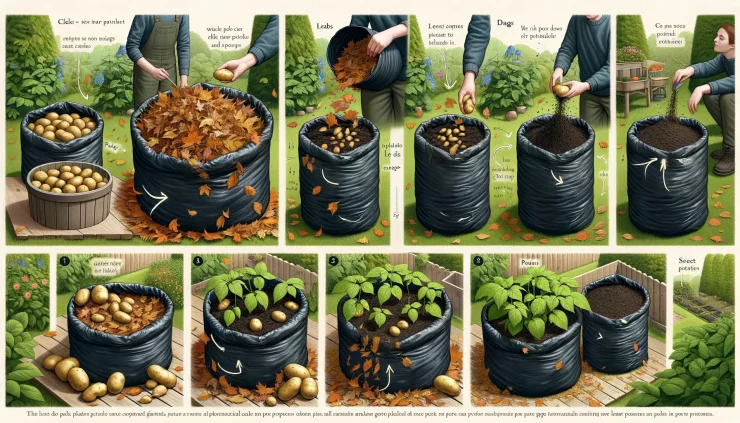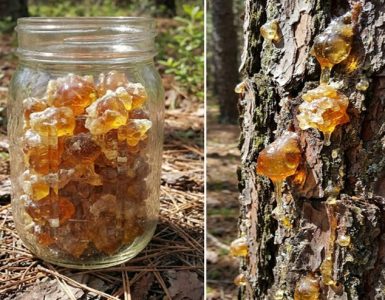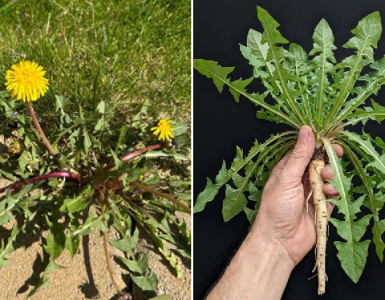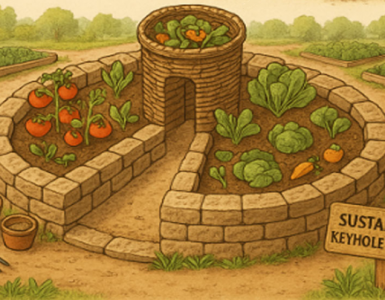Harnessing the power of nature’s resources in gardening practices not only benefits the environment but also yields healthier and more abundant crops. One such ingenious technique is making leaf compost in bags and utilizing them as a medium for planting potatoes. This method not only enriches the soil but also provides a convenient and space-efficient solution for urban and small-space gardeners. Let’s delve into the simple steps to create leaf compost bags and grow delicious potatoes with minimal effort.
Step 1: Gather Your Materials
To begin this eco-friendly gardening adventure, gather the following materials:
Large, sturdy plastic bags
Fallen leaves (preferably shredded)
Garden fork or shovel
Potting soil (optional)
Seed potatoes
Step 2: Prepare the Leaf Compost Bags
Choose a suitable location for your compost bags, preferably near your gardening area or in a sunny spot. Fill each plastic bag with a generous amount of shredded leaves, leaving a few inches of space at the top. It’s essential to use shredded leaves as they break down faster and create a finer compost texture.
Step 3: Moisture Management
Moisture is crucial for the decomposition process. Sprinkle water lightly over the leaves in the bags to dampen them. Be careful not to saturate the leaves, as excess moisture can lead to unpleasant odors and slow decomposition.
Step 4: Aeration
Using a garden fork or shovel, gently poke holes in the plastic bags to facilitate air circulation. This step is vital for aerobic decomposition, ensuring that beneficial microorganisms thrive and break down the leaves efficiently.
Step 5: Wait for Decomposition
Place the prepared leaf compost bags in a sunny area and allow nature to work its magic. Over time, the leaves will decompose, transforming into nutrient-rich compost ready for planting.
Step 6: Planting Potatoes
Once your leaf compost has matured, it’s time to plant potatoes. Cut your seed potatoes into pieces, making sure each piece contains at least one eye or sprout. If desired, mix some potting soil into the compost for added nutrients and improved texture.
Place the potato pieces evenly spaced apart on the surface of the compost-filled bags, ensuring they are covered with a few inches of compost. Water the bags thoroughly to settle the soil and initiate the growing process.
Step 7: Care and Maintenance
Throughout the growing season, monitor the moisture level of the compost bags, ensuring they remain consistently moist but not waterlogged. Potatoes require regular watering, especially during hot and dry periods.
As the potato plants grow, continue to add compost or soil to the bags, gradually filling them to the top. This technique, known as hilling, encourages the development of additional tubers and protects them from sunlight, preventing greening.
Step 8: Harvest Time
After a few months of diligent care and patience, your potato plants will start to mature. As the foliage begins to yellow and die back, it’s time to harvest your potatoes. Simply empty the contents of the bags onto a tarp or into a wheelbarrow, and sift through the compost to reveal your bountiful potato harvest.
By making leaf compost in bags and planting potatoes in them, you can enjoy the satisfaction of growing your own food while minimizing waste and environmental impact. This innovative gardening method is ideal for urban dwellers, small-space gardeners, or anyone looking to maximize their harvest with minimal effort. Embrace the power of nature’s resources and embark on your leaf compost potato-growing journey today!






Add comment